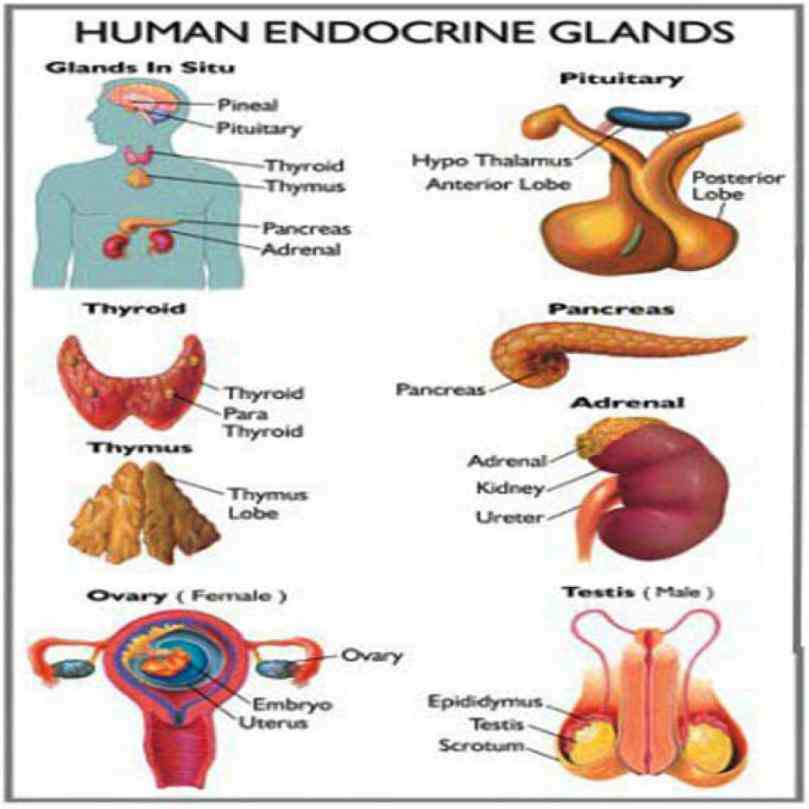The endocrine system chart. The Endocrine System: A Comprehensive Guide to Hormones and Their Functions
How does the endocrine system regulate bodily functions. What are the key hormones and their roles in maintaining homeostasis. Which glands produce specific hormones and what are their effects on the human body.
The Intricate Network of the Endocrine System
The endocrine system is a complex network of glands and organs that produce and secrete hormones directly into the bloodstream. These chemical messengers play a crucial role in regulating various bodily functions, from metabolism and growth to reproduction and mood. Understanding the intricacies of this system is essential for comprehending how our bodies maintain homeostasis and respond to internal and external stimuli.
What is the primary function of the endocrine system?
The endocrine system’s primary function is to maintain homeostasis within the body. It achieves this by controlling and coordinating various processes, including:
- Internal metabolism
- Energy levels
- Reproduction
- Growth and development
- Response to injury and stress
- Adaptation to environmental factors
By secreting hormones, the endocrine system ensures that the body’s internal environment remains stable and balanced, even in the face of external changes or challenges.

Major Endocrine Glands and Their Hormones
The endocrine system consists of several glands distributed throughout the body, each responsible for producing specific hormones. Here’s an overview of the major endocrine glands and their primary hormones:
Adrenal Glands: The Stress Responders
The adrenal glands, located atop the kidneys, produce several important hormones:
- Aldosterone: Regulates salt and water balance, influencing blood pressure
- Corticosteroids: Control key bodily functions, act as anti-inflammatories, and maintain blood sugar levels, blood pressure, and muscle strength
- Epinephrine (Adrenaline): Increases heart rate, oxygen intake, and blood flow during stress or excitement
- Norepinephrine: Helps maintain blood pressure and works alongside epinephrine in the body’s stress response
Pituitary Gland: The Master Gland
Often referred to as the “master gland,” the pituitary gland produces a wide array of hormones that control other endocrine glands:
- Antidiuretic hormone (ADH or Vasopressin): Regulates water retention in kidneys and controls blood pressure
- Adrenocorticotropic hormone (ACTH): Stimulates the production of corticosteroids by the adrenal glands
- Growth hormone (GH): Affects growth and development, stimulates protein production, and influences fat distribution
- Luteinizing hormone (LH) and Follicle-stimulating hormone (FSH): Control the production of sex hormones and gametes in both males and females
- Oxytocin: Stimulates uterine contractions during childbirth and milk ejection during breastfeeding
- Prolactin: Initiates and maintains milk production in breasts and impacts sex hormone levels
- Thyroid-stimulating hormone (TSH): Stimulates the production and secretion of thyroid hormones
How does the pituitary gland influence other endocrine glands?
The pituitary gland acts as a control center for the endocrine system by producing hormones that regulate the function of other glands. For example, TSH stimulates the thyroid gland, while ACTH influences the adrenal glands. This hierarchical control allows for precise regulation of various bodily functions.
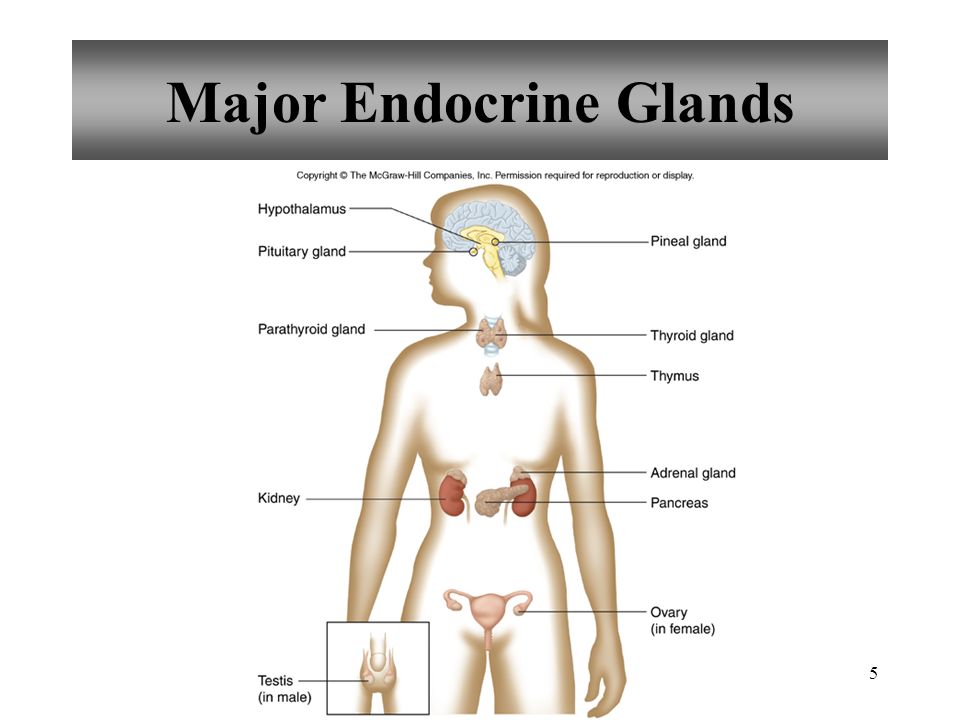
The Pancreas: Regulator of Blood Sugar
The pancreas plays a crucial role in regulating blood sugar levels through the production of two primary hormones:
- Insulin: Lowers blood sugar levels by stimulating the metabolism of glucose, protein, and fat
- Glucagon: Raises blood sugar levels when they drop too low
The balance between insulin and glucagon is essential for maintaining stable blood glucose levels, which is crucial for overall health and energy production in the body.
How do insulin and glucagon work together to regulate blood sugar?
Insulin and glucagon work in a complementary fashion to keep blood sugar levels within a narrow, healthy range. When blood sugar rises, such as after a meal, the pancreas releases insulin to promote glucose uptake by cells and storage in the liver. Conversely, when blood sugar drops, such as during fasting or exercise, glucagon is released to stimulate the liver to release stored glucose into the bloodstream.
Thyroid and Parathyroid Glands: Metabolism and Calcium Balance
The thyroid and parathyroid glands work together to regulate metabolism and calcium balance in the body:
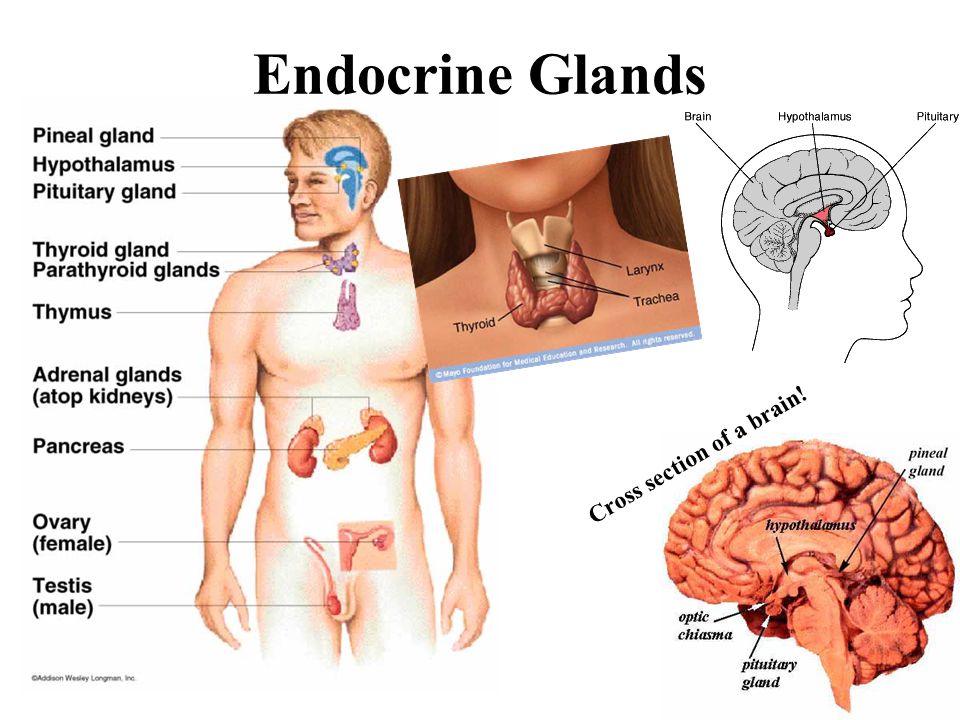
Thyroid Gland
The thyroid gland produces thyroid hormones, primarily thyroxine (T4) and triiodothyronine (T3). These hormones play a crucial role in:
- Controlling metabolism
- Affecting growth and maturation
- Regulating nervous system activity
- Influencing body temperature
Parathyroid Glands
The parathyroid glands, located behind the thyroid, produce parathyroid hormone (PTH). PTH is the most important regulator of blood calcium levels in the body. It works by:
- Increasing calcium absorption from the intestines
- Promoting calcium reabsorption in the kidneys
- Stimulating the release of calcium from bones when blood levels are low
How does the thyroid hormone affect metabolism?
Thyroid hormones increase the basal metabolic rate, which is the amount of energy your body uses at rest. They achieve this by stimulating the production of enzymes involved in energy metabolism and by increasing the sensitivity of tissues to other hormones, such as adrenaline. This results in increased heart rate, breathing rate, and heat production, all of which contribute to a higher metabolic rate.

Reproductive Hormones: Estrogen, Progesterone, and Testosterone
The reproductive system is heavily influenced by hormones produced in the ovaries and testes:
Ovaries
The ovaries produce two main hormones:
- Estrogen: Affects the development of female sexual characteristics and reproductive development, is important for the functioning of the uterus and breasts, and helps protect bone health
- Progesterone: Stimulates the lining of the uterus for fertilization and prepares the breasts for milk production
Testes
The testes primarily produce testosterone, which is responsible for:
- Development of male sexual characteristics
- Sperm production
- Muscle mass and strength
- Bone density
- Sex drive
How do reproductive hormones influence secondary sexual characteristics?
Reproductive hormones play a crucial role in the development of secondary sexual characteristics during puberty. In females, estrogen promotes breast development, widening of the hips, and the onset of menstruation. In males, testosterone stimulates the growth of facial and body hair, deepening of the voice, and increased muscle mass. These hormones continue to influence these characteristics throughout adulthood, maintaining sexual dimorphism between males and females.

The Kidneys: More Than Just Waste Removal
While primarily known for their role in waste removal, the kidneys also function as endocrine organs, producing several important hormones:
- Renin: Works with angiotensin to control blood pressure, both directly and by regulating aldosterone production from the adrenal glands
- Erythropoietin: Stimulates red blood cell production in the bone marrow
How does erythropoietin affect oxygen delivery in the body?
Erythropoietin (EPO) plays a crucial role in oxygen delivery throughout the body by stimulating the production of red blood cells. When the kidneys detect low oxygen levels in the blood, they release EPO, which travels to the bone marrow and promotes the maturation of red blood cell precursors. This increase in red blood cells enhances the oxygen-carrying capacity of the blood, improving overall tissue oxygenation and function.
Hormonal Interactions and Feedback Loops
The endocrine system operates through a series of complex interactions and feedback loops, ensuring that hormone levels are maintained within appropriate ranges. These mechanisms help prevent overproduction or underproduction of hormones, which could lead to various health issues.

What is a negative feedback loop in the endocrine system?
A negative feedback loop is a self-regulating mechanism in which the output of a system inhibits further production of that output. In the endocrine system, this often involves a hormone inhibiting its own production or the production of hormones that stimulated its release. For example, when thyroid hormone levels in the blood rise, they inhibit the release of TSH from the pituitary gland, which in turn reduces thyroid hormone production. This helps maintain stable hormone levels in the body.
How do hormones interact with target cells?
Hormones interact with target cells through specific receptors, which can be located on the cell surface or within the cell, depending on the hormone’s chemical structure. When a hormone binds to its receptor, it triggers a cascade of intracellular events that ultimately lead to the hormone’s effect on cell function. This specificity ensures that hormones only affect cells that possess the appropriate receptors, allowing for precise control of bodily functions.
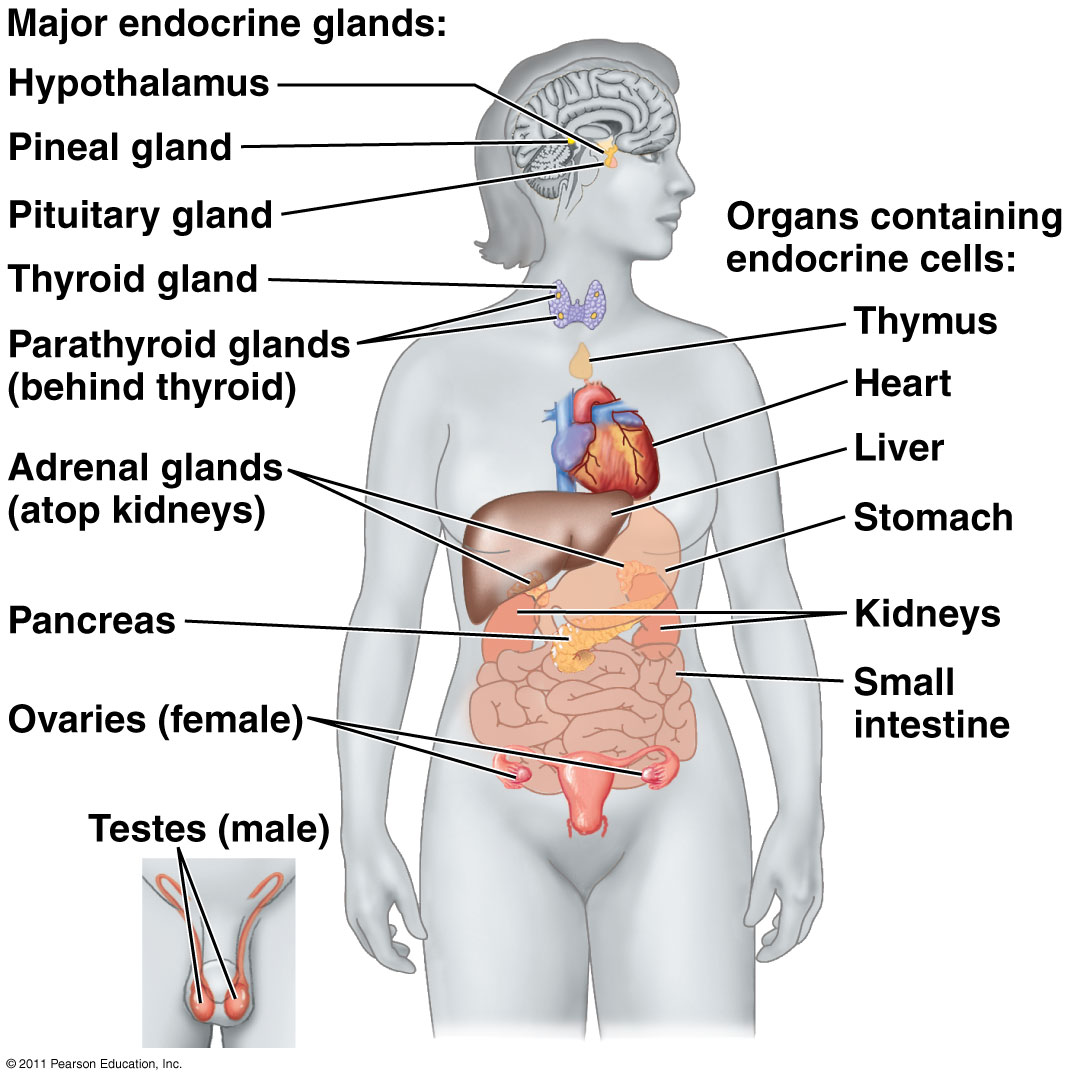
Endocrine Disorders and Their Impact on Health
Disorders of the endocrine system can have wide-ranging effects on health due to the crucial role hormones play in regulating bodily functions. Some common endocrine disorders include:
- Diabetes mellitus: A group of metabolic disorders characterized by high blood sugar levels due to problems with insulin production or function
- Thyroid disorders: Conditions such as hypothyroidism and hyperthyroidism, which involve abnormal thyroid hormone levels
- Adrenal insufficiency: A condition where the adrenal glands don’t produce enough hormones, particularly cortisol
- Growth hormone deficiency: A condition where the pituitary gland doesn’t produce enough growth hormone, affecting growth and development
- Polycystic ovary syndrome (PCOS): A hormonal disorder common among women of reproductive age, characterized by irregular periods and elevated androgen levels
How do endocrine disorders affect quality of life?
Endocrine disorders can significantly impact an individual’s quality of life by disrupting various bodily functions. For example, thyroid disorders can affect energy levels, weight, and mood. Diabetes can lead to complications affecting multiple organ systems if not properly managed. Growth hormone deficiency in children can result in stunted growth and delayed development. By understanding these disorders and their effects, healthcare providers can develop targeted treatment strategies to improve patients’ well-being and overall health outcomes.
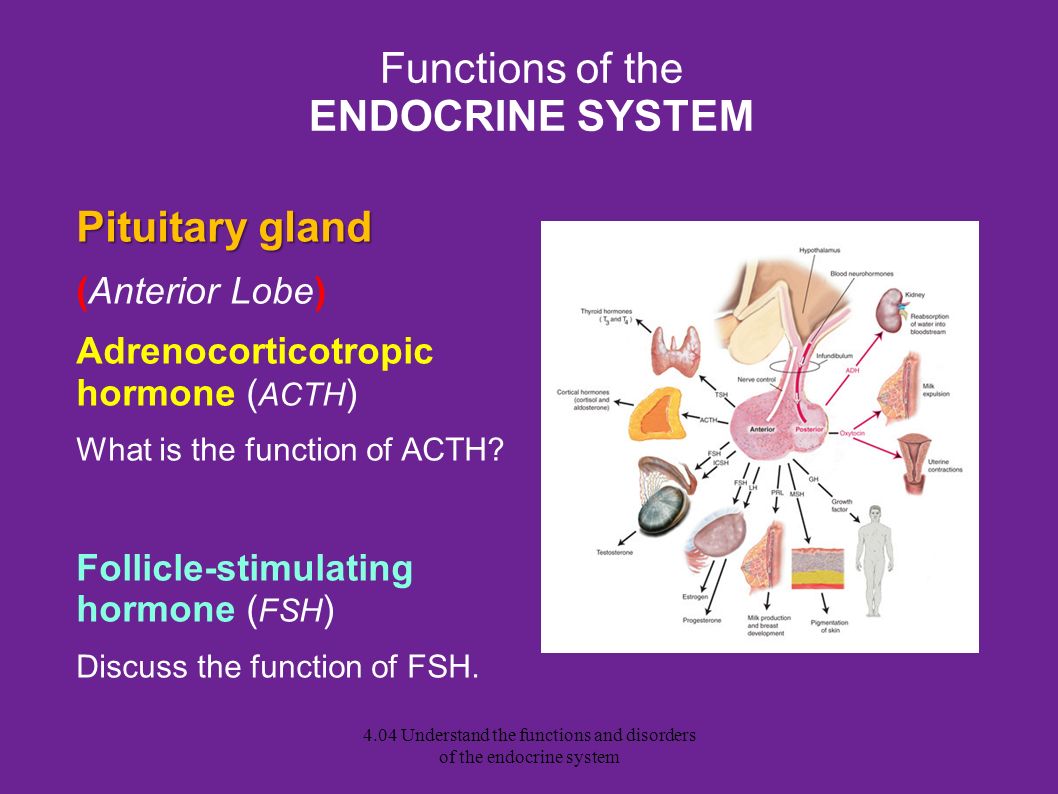
The endocrine system’s intricate network of glands and hormones plays a vital role in maintaining our body’s homeostasis and overall health. From regulating metabolism and growth to controlling reproduction and stress responses, hormones are essential chemical messengers that keep our bodies functioning optimally. By understanding the complexities of this system, we can better appreciate the importance of hormonal balance and the potential consequences of endocrine disorders. As research in this field continues to advance, our knowledge of the endocrine system and its impact on health will undoubtedly expand, leading to improved diagnostic tools and treatment options for endocrine-related conditions.
Hormones and the Endocrine System
The endocrine system uses hormones to control and coordinate your body’s internal metabolism (or homeostasis) energy level, reproduction, growth and development, and response to injury, stress, and environmental factors. Consider the following hormones and their role in the workings of the endocrine system:
Where the hormone is produced | Hormone(s) secreted | Hormone function |
|---|---|---|
Adrenal glands | Aldosterone | Regulates salt, water balance, and blood pressure |
Adrenal glands | Corticosteroid | Controls key functions in the body; acts as an anti-inflammatory; maintains blood sugar levels, blood pressure, and muscle strength; regulates salt and water balance |
Pituitary gland | Antidiuretic hormone (vasopressin) | Affects water retention in kidneys; controls blood pressure |
Pituitary gland | Adrenocorticotropic hormone (ACTH) | Controls production of sex hormones (estrogen in women and testosterone in men) and the production of eggs in women and sperm in men. |
Pituitary gland | Growth hormone (GH) | Affects growth and development; stimulates protein production; affects fat distribution |
Pituitary gland | Luteinizing hormone (LH) and follicle-stimulating hormone (FSH) | Controls production of sex hormones (estrogen in women and testosterone in men) and the production of eggs in women and sperm in men |
Pituitary gland | Oxytocin | Stimulates contraction of uterus and milk ducts in the breast |
Pituitary gland | Prolactin | Initiates and maintains milk production in breasts; impacts sex hormone levels |
Pituitary gland | Thyroid-stimulating hormone (TSH) | Stimulates the production and secretion of thyroid hormones |
Kidneys | Renin and angiotensin | Controls blood pressure, both directly and also by regulating aldosterone production from the adrenal glands |
Kidneys | Erythropoietin | Affects red blood cell (RBC) production |
Pancreas | Glucagon | Raises blood sugar levels |
Pancreas | Insulin | Lowers blood sugar levels; stimulates metabolism of glucose, protein, and fat |
Ovaries | Estrogen | Affects development of female sexual characteristics and reproductive development, important for functioning of uterus and breasts; also protects bone health |
Ovaries | Progesterone | Stimulates the lining of the uterus for fertilization; prepares the breasts for milk production |
Parathyroid glands | Parathyroid hormone (PTH) | Most important regulator of blood calcium levels |
Thyroid gland | Thyroid hormone | Controls metabolism; also affects growth, maturation, nervous system activity, and metabolism |
Adrenal glands | Epinephrine | Increases heart rate, oxygen intake, and blood flow |
Adrenal glands | Norepinephrine | Maintains blood pressure |
Testes (testicles) | Testosterone | Develop and maintain male sexual characteristics and maturation |
Pineal gland | Melatonin | Releases melatonin during night hours to help with sleep |
Hypothalamus | Growth hormone releasing hormone (GHRH) | Regulates growth hormone release in the pituitary gland |
Hypothalamus | Thyrotropin releasing hormone (TRH) | Regulates thyroid stimulating hormone release in the pituitary gland |
Hypothalamus | Gonadotropin releasing hormone (GnRH) | Regulates LH/FSH production in the pituitary gland |
Hypothalamus | Corticotropin releasing hormone (CRH) | Regulates adrenocorticotropin release in the pituitary gland |
Thymus | Humoral factors | Helps develop the lymphoid system |
Endocrine System Anatomical Chart
9781587790164
Anatomical Chart Company
ISBN/ISSN:
9781587790164
9781587790164
This useful chart of The Endocrine System shows the location of glands on the body.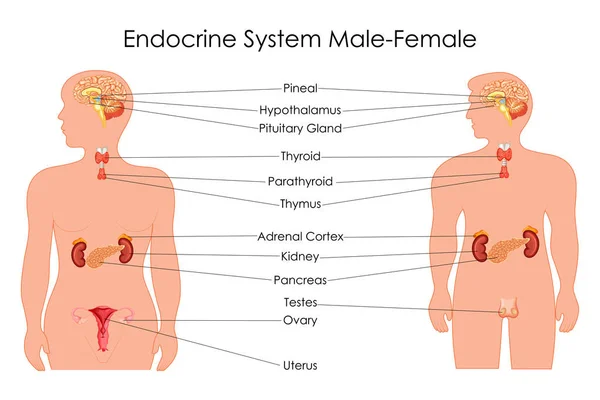 Each gland is seperately illustrated …
Each gland is seperately illustrated …
Read More
-
Questions and Answers
-
Product Description
This useful chart of The Endocrine System shows the location of glands on the body. Each gland is seperately illustrated and labeled and the hormones it secrets are listed.
Shows the following glands:
thyroid
parathyroid
thymus
adrenal
pineal
pituitary
Also includes the organs that have a secondary endocrine function producing and releasing hormones. The heart, kidney, stomach, duodenum, jejunum, pancreas, ovary, placenta, and testes and the hormones they secret are shown.
Made in the USA.
Available in the following versions :- 20″ x 26″ heavy paper laminated with grommets at top corners ISBN 9781587790157
- 20″ x 26″ heavy paper ISBN 9781587790164
-
SpecsISBN/ISSN
9781587790164
Product Format
Paper
Trim Size
20 x 26
Table
Weight
0.
 15
15 -
- Anatomical Chart Company
$
14. 99
99
USD $14.99
Quantity:
MORE OPTIONS
REQUEST REVIEW COPY
REQUEST PERMISSIONS
Item already added to cart.
Buy from another retailer
Customer reviews
Overall: out of 5
9781587790164
Endocrine System Anatomical Chart
9781587790164
Home / Medicine / Endocrine System Anatomical Chart
1
https://shop.lww.com/endocrine-system-anatomical-chart/p/9781587790164
//cdn-tp2.mozu.com/16833-25855/cms/25855/files/53a0d370-52da-4d70-975c-f3899eeb3c22
14.99
14.99
14.99
1
Which nervous system regulates the work of the endocrine system
The human body is a complex mechanism. Its cells, tissues and organs must work harmoniously and harmoniously. This condition is ensured by the work of two signaling systems: endocrine and nervous. Their interconnection provides several important conditions:
- homeostasis – the body’s ability to maintain constant characteristics;
- adaptation – the ability to change some factors of the internal environment depending on changes in external conditions;
- cell growth;
- reproduction.

The nervous system is a collection of organs that provide innervation to all organs and tissues. Its central section includes the brain and spinal cord, and the peripheral section includes the nerves. Information is captured by receptors, then moves in the form of impulses through nerve cells and reaches the brain. It provides a quick reaction in the form of muscle movement or other response to a stimulus. Also, the nervous system regulates the work of the endocrine system, controlling the intensity of hormone production.
The endocrine system is a collection of glands that secrete hormones into the blood. It includes the hypothalamus, pituitary gland, as well as peripheral glands: thyroid, pancreas, genital, adrenal glands. Hormones are biologically active substances that combine with the cells of various organs and can change their work, speed up or slow down biochemical processes in the body.
To understand which nervous system regulates the work of the endocrine system, you need to track the relationship. It is called “neuroendocrine regulation” and consists in controlling the production of hormones by the endocrine glands. This process is ensured by the work of several structures: the hypothalamus, neurotransmitter hormones, and the adrenal medulla.
It is called “neuroendocrine regulation” and consists in controlling the production of hormones by the endocrine glands. This process is ensured by the work of several structures: the hypothalamus, neurotransmitter hormones, and the adrenal medulla.
The role of the hypothalamus
The hypothalamus is a small area of the diencephalon, which is considered the center of neuroendocrine regulation. It is connected with other parts of the nervous system, the brain and spinal cord. Together with the pituitary gland, it forms the hypothalamic-pituitary system and regulates the intensity of the production of its hormones.
The hypothalamus receives signals from the following structures:
- basal nuclei (ganglia) – accumulations of gray matter in the white matter of the brain;
- spinal cord;
- parts of the brain: oblong, middle, thalamus, as well as some parts of the cerebral hemispheres.
The hypothalamus is the center that accumulates data from the whole organism, as well as from the external environment. Nerve cells of the hypothalamus are able to produce several types of neuroendocrine transmitters – biologically active substances that affect the intensity of the synthesis of tropic pituitary hormones:
Nerve cells of the hypothalamus are able to produce several types of neuroendocrine transmitters – biologically active substances that affect the intensity of the synthesis of tropic pituitary hormones:
- Liberins – a group of compounds that stimulate hormonal synthesis. So, somatoliberin increases the production of somatotropic growth hormone, thyreoliberin – thyrotropic, gonadoliberin – luteinizing and follicle-stimulating hormones.
- Statins are substances that suppress the production of tropic hormones by the pituitary gland. There are varieties such as somatostatin, prolactostatin, melanostatin.
- Oxytocin and vasopressin are hormones produced by the hypothalamus but stored in the posterior pituitary gland. The first increases during childbirth and causes contraction of the muscular wall of the uterus, but also performs other functions. Vasopressin regulates water metabolism, increases vascular tone.
Hormones of the hypothalamus enter the pituitary gland through the bloodstream and influence its functions there. Statins and liberins do not always act strictly selectively. So, somatostatin can suppress the production of not only somatotropin, but also thyrotropic hormone, insulin and prolactin.
Statins and liberins do not always act strictly selectively. So, somatostatin can suppress the production of not only somatotropin, but also thyrotropic hormone, insulin and prolactin.
Nervous regulation of the adrenal glands
Adrenal glands are paired glands, which in humans are located in the region of the upper pole of the kidneys. In their structure, two components are distinguished: cortical and medulla. The cortex performs an endocrine function and produces hormones into the blood, and the medulla is an intermediate link between the nervous and endocrine systems.
One of the functions of the adrenal medulla is the production of catecholamines. This is a group of biologically active compounds that includes epinephrine and norepinephrine. They are activated to the maximum in stressful situations, when it is urgent to bring the body into tone, and trigger a number of changes:
- accelerated heartbeat;
- increased vascular tone;
- increase in blood pressure;
- expansion of the bronchial lumen;
- inhibition of the digestive tract and decrease in the secretion of its glands;
- dilated pupils;
- increased activity of sweat glands.

The adrenal medulla has a similar structure to the nervous tissues, since during fetal development it is formed from identical rudiments. Histologically, the cells in this area are deformed neurons of the sympathetic autonomic nervous system, which then transformed into endocrine cells. They are activated under the influence of sympathetic nerve fibers. As a result of their irritation, adrenaline and norepinephrine are released into the bloodstream.
Catecholamines are considered “stress hormones” because their concentration increases in uncomfortable conditions for the body. They are activated during times of pain, exposure to cold, exercise, and muscle fatigue. Also, their increase can be caused by stress, vivid emotions, prolonged mental stress and other factors. The work of the adrenal medulla is controlled by structures such as the cerebral cortex and medulla oblongata, as well as the hypothalamus.
Feedback
In the process of neuroendocrine regulation, a two-way connection is observed. The organs of the endocrine system are under the control of nervous structures that stimulate or inhibit the synthesis of biologically active compounds. However, hormones also affect the central and peripheral parts of the nervous system. Thus, the thyroid gland secretes substances that act directly on the brain, bypassing the complex blood-brain barrier. They are useful for brain tissues, as they stimulate their growth and development, improve mental functions. Adrenaline and norepinephrine can also affect neurons, thereby participating in brain function.
The organs of the endocrine system are under the control of nervous structures that stimulate or inhibit the synthesis of biologically active compounds. However, hormones also affect the central and peripheral parts of the nervous system. Thus, the thyroid gland secretes substances that act directly on the brain, bypassing the complex blood-brain barrier. They are useful for brain tissues, as they stimulate their growth and development, improve mental functions. Adrenaline and norepinephrine can also affect neurons, thereby participating in brain function.
Specialists of the medical center “Yunona” are engaged in diagnosing changes in the nervous and endocrine systems: a neurologist and an endocrinologist. You can make an appointment by calling 8 (831) 225-56-56.
Diagnostics in endocrinology – prices in Moscow at the medical center “SM-Clinic”
The system of neurohumoral regulation (translated as “nerve-fluid control”) is a familiar endocrine system that is quite complex, but extremely important for the normal functioning of the whole organism.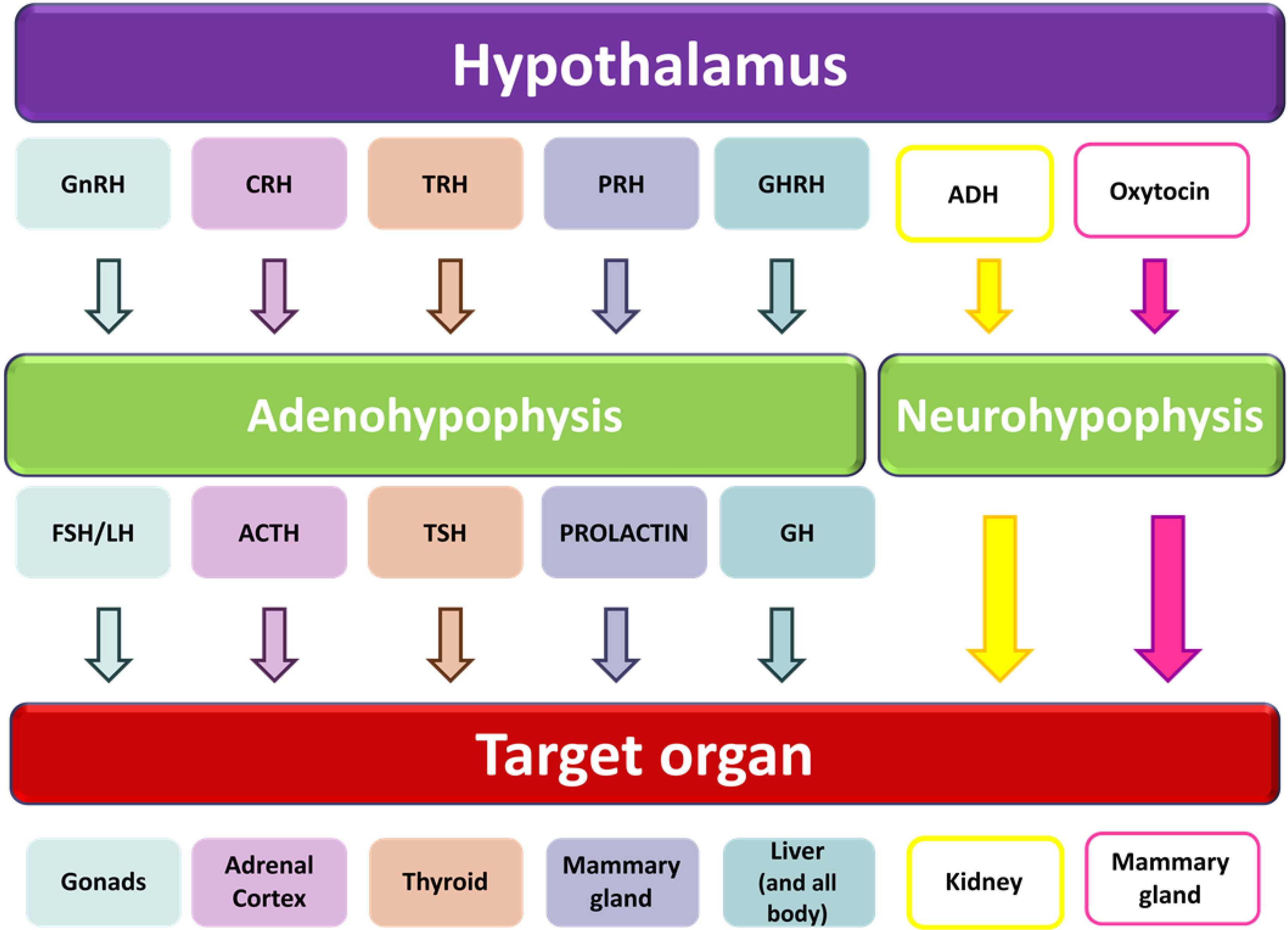 The study of the structure of this system, as well as the identification of dysfunctions and the development of methods for treating diseases, is a separate area in medicine – endocrinology.
The study of the structure of this system, as well as the identification of dysfunctions and the development of methods for treating diseases, is a separate area in medicine – endocrinology.
Unfortunately, the pathologies of the endocrine system are diverse and numerous, their course can be unpredictable, and the symptoms are not always obvious. Therefore, it is important to have an idea about the methods of diagnosing endocrine diseases.
Useful information
The endocrine system is a collection of endocrine glands – thyroid, thymus, pancreas, parathyroid glands, pituitary gland, adrenal glands, gonads. The organs, tissues and cells that make up the system produce special organic compounds – bioactive regulators or hormones. Translated from the Greek, the term “hormone” means “induce”, “activate”, which is the best way to explain the functional significance of these compounds.
Hormones affect all processes in the body. Entering directly into the bloodstream, they are captured by sensitive receptors. The cells receive a command, and they begin to react: for example, body temperature or blood pressure rises, the intensity of lactogenesis (milk production) increases, etc. In other words, hormones start, slow down or completely stop all physiological and mental processes. At the same time, each gland of the endocrine system produces several hormones, and each hormone affects different processes.
The cells receive a command, and they begin to react: for example, body temperature or blood pressure rises, the intensity of lactogenesis (milk production) increases, etc. In other words, hormones start, slow down or completely stop all physiological and mental processes. At the same time, each gland of the endocrine system produces several hormones, and each hormone affects different processes.
Failures sometimes occur in the endocrine system and pathologies develop, which are characterized by:
- violation of hormone production;
- decrease or increase in their number;
- production of abnormal hormones;
- formation of resistance to hormonal action, violation of the absorption process.
Any such failure can lead to the development of serious diseases. The list of endocrine pathologies is quite wide:
- hypothyroidism – thyroid dysfunction, which is characterized by insufficient production of hormones;
- goiter – hypo- or hyperfunction, accompanied by an increase in the thyroid gland;
- diabetes mellitus – a disease that leads to a violation of metabolic processes, which develops against the background of a lack of insulin;
- thyrotoxicosis – hyperfunction of the thyroid gland;
- hypoparathyroidism – hypofunction of the parathyroid glands;
- hyperparathyroidism – excessive production of the hormone by the parathyroid gland;
- autoimmune thyroiditis – destructive changes in the tissues of the thyroid gland;
- gigantism – excessive production of growth hormone.

Risk factors for the development of endocrine diseases are overweight, low physical activity, unhealthy diet, bad habits, hereditary predisposition.
The most common symptoms of endocrine pathologies:
- tired feeling, muscle weakness;
- sudden weight gain or loss without dietary change;
- palpitations;
- excessive sweating;
- drowsiness;
- memory impairment, scattered attention;
- constant feeling of thirst;
- increased blood pressure;
- frequent urination.
Symptoms of pathologies can be mixed, diseases are often disguised as other ailments. However, modern methods of diagnosing endocrine diseases make it possible to detect deviations with high accuracy.
Examinations are carried out using the latest techniques and equipment. Contact the representatives of the clinic at the specified phone number to make an appointment with an endocrinologist.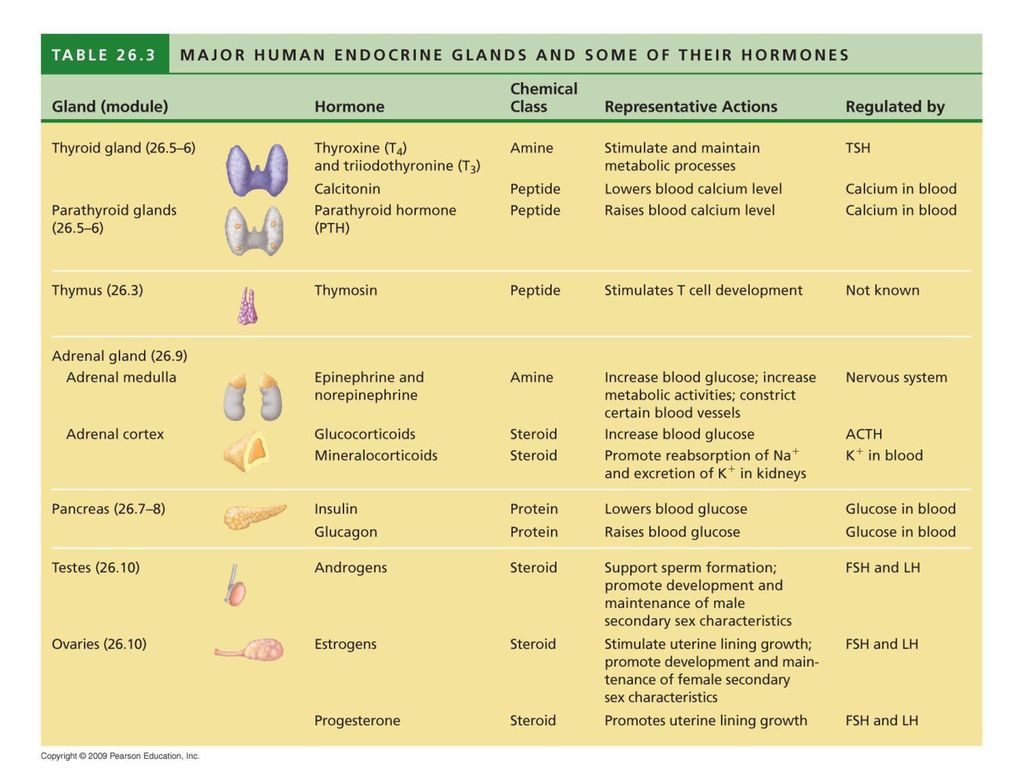


 15
15
